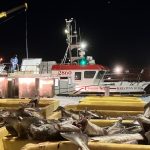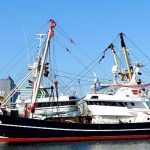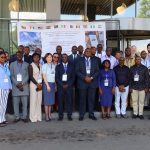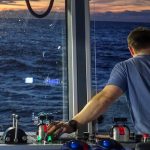The Strategy for the Baltic Sea Region (SBSR) most likely signifies the beginning of stronger regionalisation within the European Union, key fisheries issues such as fleet capacity, discards and illegal catches being part of the new plan.
During the Swedish Presidency of the EU, improving integration in the Baltic region has been high on the agenda. June saw the official launch of the SBSR, with a communication from the Commission to the European Parliament and Council. This is expected to be formally endorsed by the Council of Ministers on 29–30 October. It is hoped that the creation of a new forum for dialogue and cooperation, will better address region-specific issues in governance and sector policy.
Amongst the Swedish leadership there is an acknowledgement that as the EU has enlarged the potential for “one size fits all” policies to be successful diminishes. During his opening address at the EU Baltic Sea Strategy conference in September, Fredrik Reinfeldt argued that “as more and more countries come knocking on the EU’s door wanting to be members of the Union, we need new ways to increase integration between the Member States. And I don’t think we can have a common model and believe that it will work everywhere. Instead, it is important to take into account the regional situation and challenges and develop measures and political instruments that work for different parts of the EU. And that is just what the EU Baltic Sea Strategy does”.
The SBSR is the first instance of the EU implementing a macro-regional policy. Pawel Samecki, Commissioner for Regional Policy, has presented the idea that “a macro-regional strategy can provide a useful structure and approach for addressing the challenges and opportunities of a region……responsibility should be placed at the level most appropriate – usually as low as possible – rather than the Commission taking over.”
One of the main goals of the SBSR is to better coordinate and collaborate on policy issues amongst neighbouring states by devolving responsibility from a European level to a regional one.
The action plan presented by the Commission for the Baltic Sea Region contains 80 flagship projects that are spread between 15 interlinked priority areas. The leaders for flagship projects can be inter-governmental bodies, Member States or regions. The responsibility for coordinating the priority area of agriculture, forestry and fisheries has been split between Finland and Sweden, with Sweden only responsible for fisheries. Lithuania will play a supporting role. Flagship projects shall be assigned to a “lead country”, agency or institution for their facilitation.
In the SBSR, the fisheries management component is to be focused on preserving natural zones and biodiversity and the reinforcement of the sustainable exploitation of resources. Specifically, efforts will be focused on reducing the size of the fishing fleet, eliminating discards, as well as minimising illegal and unreported catches. Here, improving coordination and cooperation between Member States and stakeholders is believed to be vital for developing a common approach to fisheries management in the Baltic Sea.
The SBSR is being seen as a template for other regional strategies by the Regional Policy department within the Commission, and its structure and aims are already being replicated in other regions within Europe, most significantly the Danube. This central European watercourse flows through six Member States, who have shared historical and cultural ties, and grapples with problems similar to the Baltic region.
For example, the goals of developing infrastructure and improving transport links within a sustainable development framework are to be found in proposals for both regions. In 2010, The Commission is hoping to present a macro-regional Danube Strategy which could be launched in early 2011 during the Hungarian Presidency of the EU.
If successful, this type of devolved regional structure for policy development and collaboration is likely to grow in importance as the EU continues to enlarge, with the Adriatic likely to be next in line for a regional strategy.








